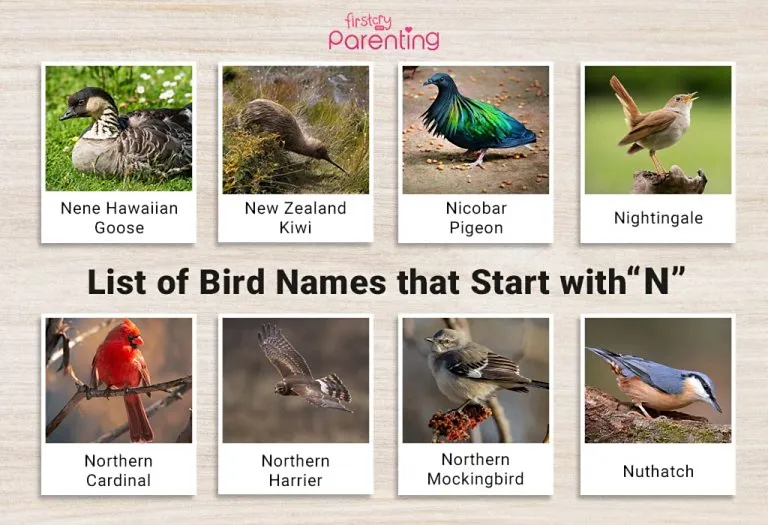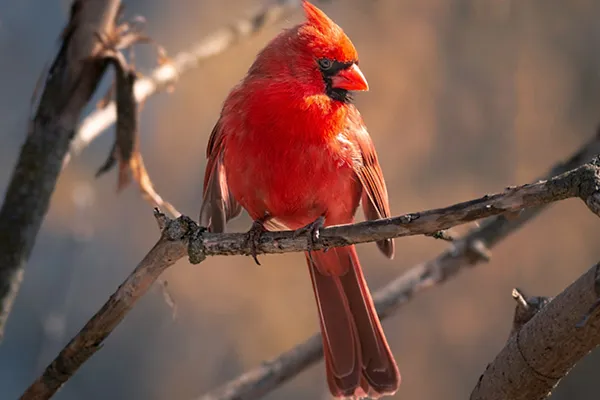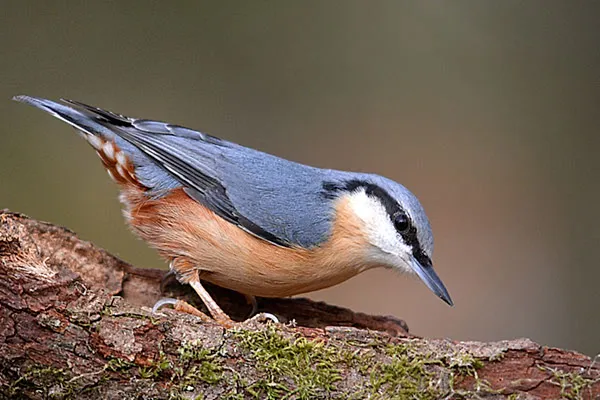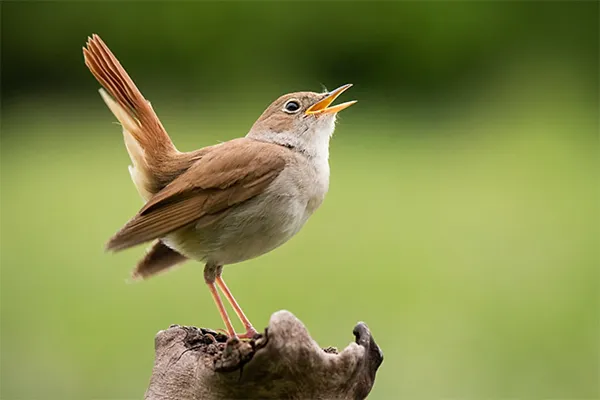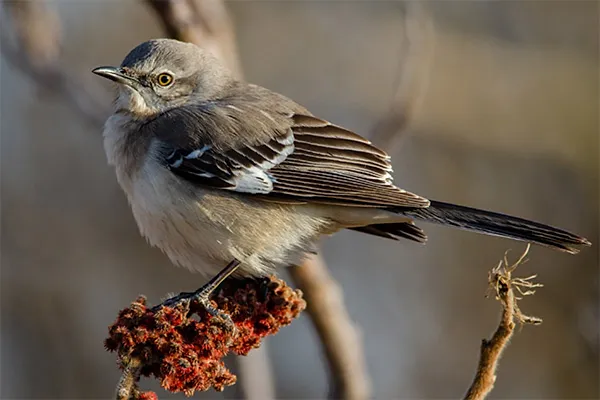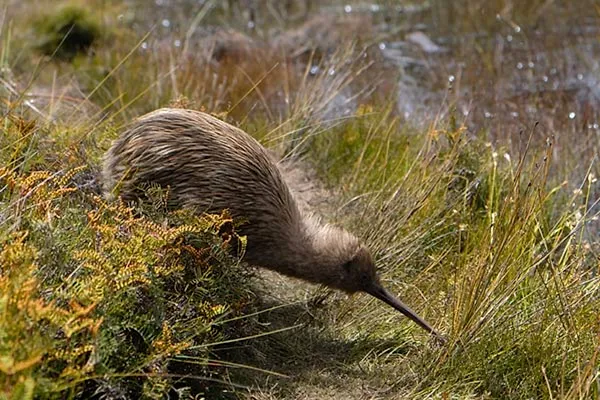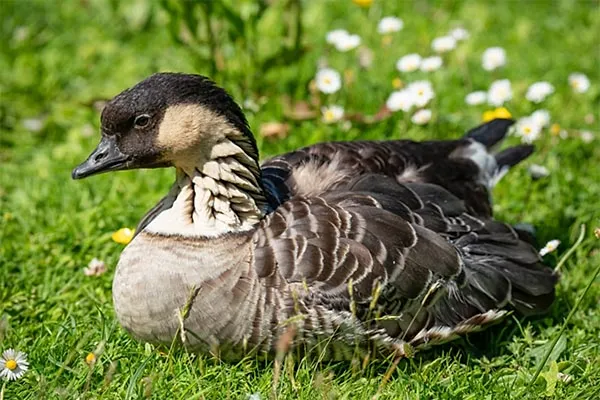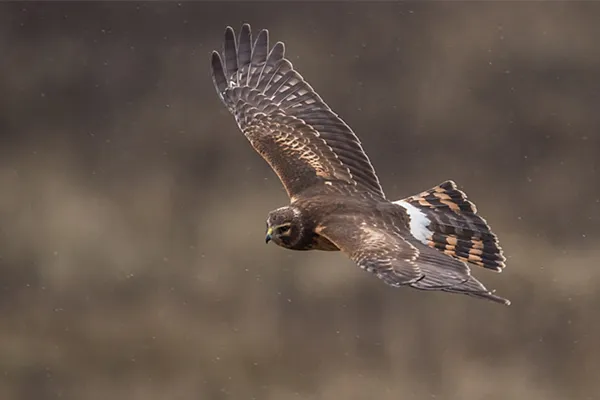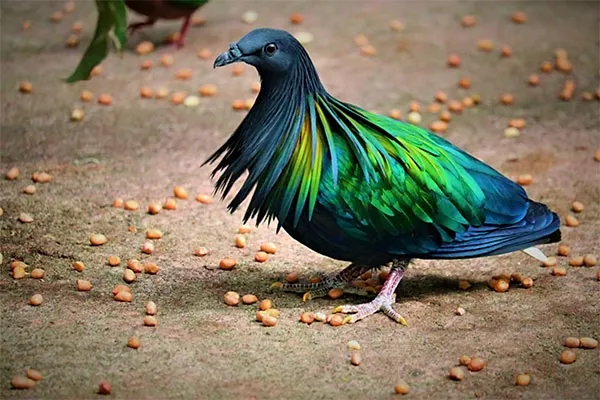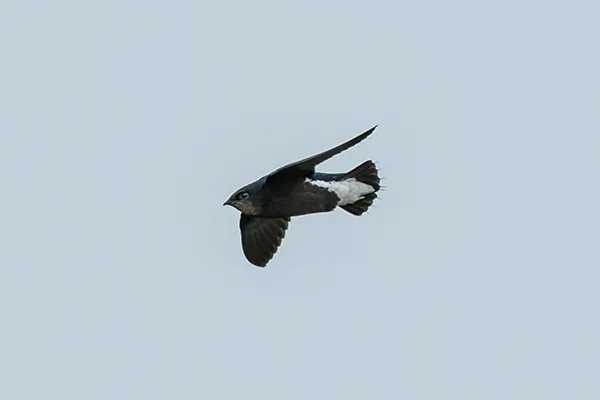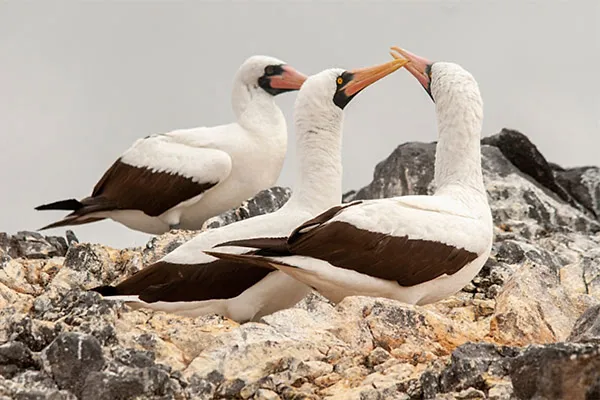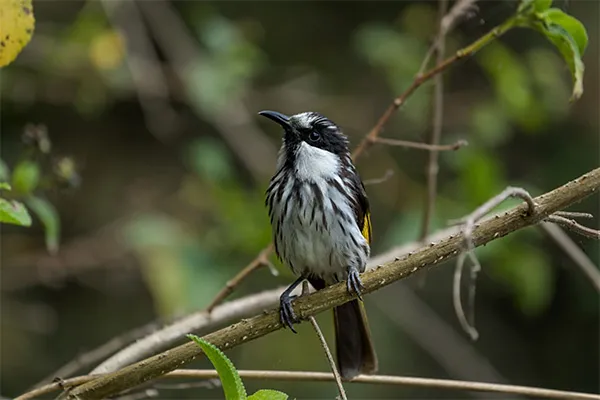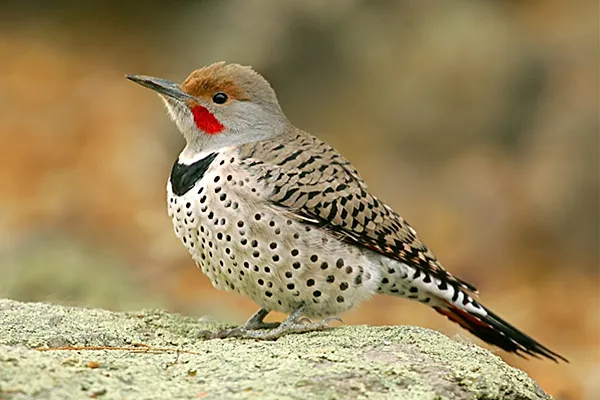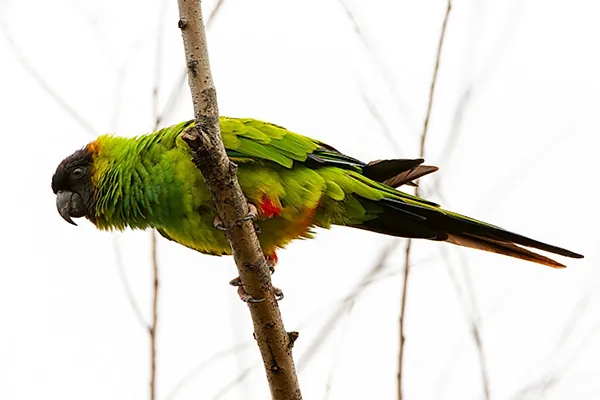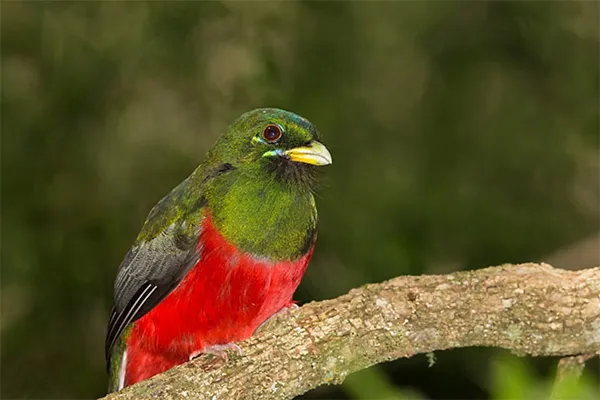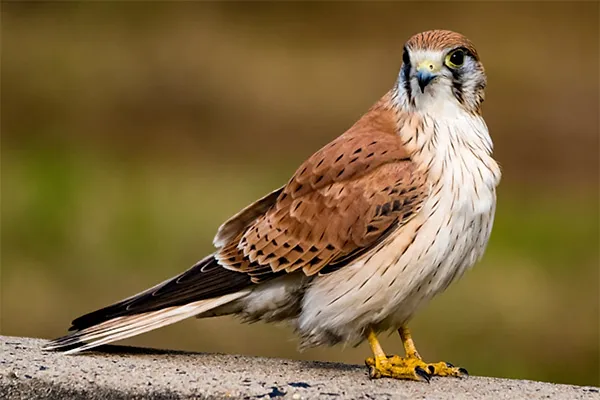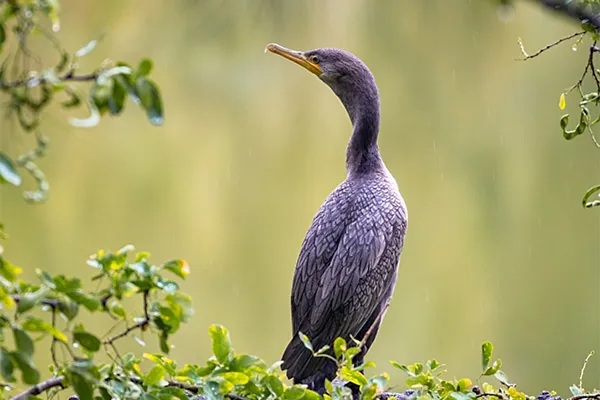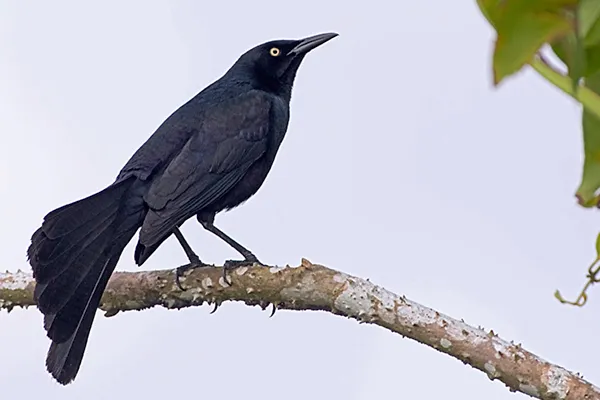List of Birds That Start With N
Hello, feathered-friend enthusiasts and curious minds alike! When expanding our knowledge about the beautiful world of birds, every letter in the alphabet offers a treasure trove of species. Today, we’re diving into bird names that start with the letter N. If you aim to enrich the kids’ vocabulary, this list is especially for you. We’ve crafted this engaging guide with N letter bird names for preschoolers and kids in mind. Birds are fascinating creatures and a delightful addition to kids’ vocabulary. So, buckle up as we embark on this avian adventure!
List of Common Birds That Start With N
Several birds, beginning with the letter N, stand out in the vast aviary world for their names, uniqueness, and beauty. Let’s take a closer look at some of these fascinating feathery creatures.
1. Northern Cardinal
Scientific Name: Cardinalis cardinalis
Where is it Found: Primarily in North America, especially in the eastern parts and southern Canada.
The Northern Cardinal, often called the ‘cardinal’, is a medium-sized bird adorned with a vivid red body, a crest on its head, and a black face mask. Females are olive-brown with hints of red on their wings and tails. They’re often spotted in woodlands, gardens, shrublands, and swamps.
Interesting Facts:
- Despite their bright appearance, they’re non-migratory birds.
- Their robust beaks are perfect for eating seeds.
- Cardinals are known to sing almost year-round, and both males and females vocalise.
2. Nuthatch
Scientific Name: Sitta
Where is it Found: Across North America, Europe, and Asia in wooded areas.
Nuthatches are compact birds with short tails and a stout bill. Their upperparts are blue-grey, while the underparts vary from white to rusty. They are agile and are often seen climbing down trees headfirst.
Interesting Facts:
- They get their name from their habit of jamming large nuts into tree bark and then “hatching” out the seeds.
- Nuthatches are known to store seeds for colder months.
- Their vocalisations resemble tiny toy horns.
3. Nightingale
Scientific Name: Luscinia megarhynchos
Where is it Found: Across Europe and in parts of Asia and Africa in open woodlands and forest clearings.
Often elusive, Nightingales are brown birds renowned more for their enchanting song than their appearance. Their melodic tunes are frequently heard during spring nights.
Interesting Facts:
- Their name translates to “night songstress”.
- Nightingales can produce more than 1000 sounds, compared to just 340 by skylarks.
- Their powerful song can be heard up to a mile away on a calm night.
4. Northern Mockingbird
Scientific Name: Mimus polyglottos
Where is it Found: Throughout North America in urban areas, farmlands, and desert habitats.
The Northern Mockingbird is a slender, grey bird known for its ability to mimic other birds and sounds from their environment. They have a white underbelly and a long tail with white outer feathers.
Interesting Facts:
- A single mockingbird can have up to 200 different song variations.
- They’re fiercely territorial, even known to dive-bomb humans and pets.
- It is the state bird of Texas, Florida, Tennessee, and Arkansas.
5. New Zealand Kiwi
Scientific Name: Apteryx
Where is it Found: Native to New Zealand.
Kiwis are flightless birds with a long beak, short legs, and brown, hair-like feathers. Their nostrils are at the end of their beak, which helps them sniff out food.
Interesting Facts:
- Kiwis have a keen sense of smell, rare among birds.
- They lay one of the largest eggs in relation to their body size.
- Despite their small size and inability to fly, Kiwis are feisty.
6. Nene (Hawaiian Goose)
Scientific Name: Branta sandvicensis
Where is it Found: Found in the wild on the Hawaiian islands of Maui, Kauai, and Hawaii.
The Nene is a medium-sized goose with a black face and crown. Its neck is buff-coloured, and its body is delicately patterned in grey-brown tones. The legs are uniquely not webbed entirely, which aids them in navigating the rugged volcanic terrains of Hawaii.
Interesting Facts:
- The Nene is the state bird of Hawaii.
- They have a soft call that sounds like a gentle quack.
- Unlike other geese, Nene do not migrate.
7. Northern Harrier
Scientific Name: Circus hudsonius
Where is it Found: North America in open habitats, including meadows, marshes, and grasslands.
Northern Harriers are medium-sized raptors with a distinct facial disk resembling an owl’s. They possess long wings and tails, with males being grey and females being brown. They fly low over open ground when hunting for their prey.
Interesting Facts:
- They rely on both vision and hearing to locate prey.
- Females are larger than males, a common trait in birds of prey.
- Northern Harriers often roost on the ground.
8. Nicobar Pigeon
Scientific Name: Caloenas nicobarica
Where is it Found: In the Nicobar Islands and in parts of Southeast Asia.
One of the most beautiful pigeon species, the Nicobar Pigeon, has iridescent feathers that shimmer in green and copper tones. It has a white tail and a black mask around its eyes.
Interesting Facts:
- They’re the closest living relative to the extinct Dodo bird.
- These pigeons are strong flyers, often travelling long distances between islands.
- They nest in dense forests and roost in large flocks.
9. Needletail Swift
Scientific Name: Hirundapus
Where is it Found: Throughout Asia and parts of Australia.
Needletail Swifts are among the fastest birds in flight. They have a streamlined body, long wings, and a short forked tail. Their plumage is predominantly dark grey.
Interesting Facts:
- They can reach speeds of up to 105 mph in the air.
- Unlike many birds, they spend most of their life in flight, even sleeping on the wing.
- Their sharp, ‘needle-like’ tail gives them their name.
10. Nazca Booby
Scientific Name: Sula granti
Where is it Found: On the Galápagos Islands and other Pacific islands.
Nazca Boobies are large seabirds with a white body, orange beak, and webbed feet. They have black wingtips and tail feathers.
Interesting Facts:
- They have a unique ‘dance’ they perform during mating rituals.
- Nazca Boobies often lay two eggs but only raise one chick, leading to siblicide.
- They can live up to 20 years in the wild.
11. New Holland Honeyeater
Scientific Name: Phylidonyris novaehollandiae
Where is it Found: Mainly in southern Australia, including Tasmania.
New Holland Honeyeaters are medium-sized birds with striking black and white plumage and a patch of yellow on their eyes and the base of their tail. They have a brush-tipped tongue to help them feed on nectar.
Interesting Facts:
- They play an essential role in pollination, transferring pollen from one flower to another.
- Their diet isn’t limited to nectar; they eat fruits and insects.
- These birds are known for their rapid and erratic flight patterns.
12. Northern Flicker
Scientific Name: Colaptes auratus
Where is it Found: Across North America, from the northernmost parts of Canada to Central America.
The Northern Flicker is a type of woodpecker. Unlike its tree-drumming cousins, it prefers to forage on the ground. It showcases a grey-brown barred back and a black-scalloped plumage.
Interesting Facts:
- They have a distinct flight pattern, a series of wing beats followed by a short glide.
- Northern Flickers have two main colour variations: yellow-shafted and red-shafted.
- During courtship or territorial disputes, you often hear their loud “wick-wick-wick” call.
13. Nanday Parakeet
Scientific Name: Aratinga nenday
Where is it Found: Native to South America and seen in regions of Brazil, Bolivia, Paraguay, and Argentina.
Nanday Parakeets, also known as Black-hooded Parakeets, have a black hood and beak, contrasting with their primarily green body. Their legs are also a striking blue, making them quite distinct.
Interesting Facts:
- These birds are friendly and often seen in large flocks.
- Recently, feral populations have been spotted in the USA, including Florida.
- Their vocal nature and ability to mimic sounds make them popular in the pet trade.
14. Napoleon Weaver
Scientific Name: Ploceus napoleoni
Where is it Found: In the highlands of central Africa, mainly in Rwanda, Uganda, and Congo.
With bright yellow underparts and a contrasting dark face mask, the Napoleon Weaver is a sight to behold. It’s a small bird but is quite active, especially during the breeding season.
Interesting Facts:
- These birds are named after Napoleon Bonaparte, but not because of any direct connection. Instead, it’s because of their French emperor-like “hat” of feathers.
- Males are polygamous and can mate with multiple females in a breeding season.
- They are skilled architects, creating intricate nests that hang from tree branches.
15. Narina Trogon
Scientific Name: Apaloderma narina
Where is it Found: Sub-Saharan African forests, from Sierra Leone to Kenya and then down to South Africa.
The Narina Trogon is a beautifully coloured bird with shades of green and red. Males often have brighter plumage than females. With a robust body and a short beak, it stands out in its natural habitat.
Interesting Facts:
- They’re named after Narina, a Khoikhoi woman French ornithologist François Levaillant loved.
- These birds are often hard to spot as their bright colours surprisingly help them camouflage against green foliage.
- Their call sounds like a series of soft, mournful hoots.
16. Naked-Faced Spiderhunter
Scientific Name: Arachnothera clarae
Where is it Found: The dense forests of the Philippines, especially in Mindanao.
A small bird with predominantly olive-green plumage and a distinct yellowish underbelly, the naked-faced spiderhunter gets its peculiar name from its striking blue unfeathered face.
Interesting Facts:
- As the name suggests, these birds predominantly feed on spiders.
- They have a sharp, curved beak, which aids in extracting spiders from their webs.
- Their songs are a series of musical whistles, making them a treat to hear in their natural habitat.
17. Nankeen Kestrel
Scientific Name: Falco cenchroides
Where is it Found: Across Australia, including Tasmania and other surrounding islands.
This small raptor exhibits a beautiful combination of rusty red and brown hues, with a creamy underbelly on its upper parts. They have a distinct black streak, like a mascara smudge below their eyes.
Interesting Facts:
- Unlike other raptors that swiftly dive onto their prey, Nankeen Kestrels often hover in the air, scanning the ground before moving.
- They have a varied diet, ranging from insects to small mammals.
- The name ‘Nankeen’ relates to the buff-coloured cloth from Nanking, China, that resembles the bird’s primary colour.
18. Navaisha Flufftail
Scientific Name: Sarothrura insularis
Where is it Found: Mainly in the wetlands around Lake Naivasha in Kenya.
This elusive bird is small and has striking black and white barred underparts. The upperparts are more rufous-brown, and it has a thin, slightly curved beak.
Interesting Facts:
- Flufftails are named for their fluffy tails, often elevated as they move.
- These birds are incredibly secretive and are more often heard than seen.
- They have a sharp, repetitive call, sometimes sounding like a toy being wound up.
19. Neotropic Cormorant
Scientific Name: Phalacrocorax brasilianus
Where is it Found: Throughout the American tropics and subtropics, from the southern USA to the southern parts of South America.
This is a medium-sized cormorant with dark plumage. It has a long tail and neck, and during the breeding season, adults exhibit a white border around a bare facial patch.
Interesting Facts:
- They are excellent divers, often submerging for extended periods hunting for fish.
- These birds are highly friendly and can be spotted in large colonies during breeding.
- Unlike many birds, Neotropic Cormorants use their webbed feet to propel through water when hunting.
20. Nicaraguan Grackle
Scientific Name: Quiscalus nicaraguensis
Where is it Found: Exclusively in the Pacific lowlands of southwestern Nicaragua.
With a glossy black body and a long, keel-shaped tail, the Nicaraguan Grackle is a sight to behold. The males are generally larger and exhibit more shine in their plumage than the females.
Interesting Facts:
- These birds have a varied diet, which includes seeds, fruits, and small animals.
- They’re known for their vocal nature, producing a range of calls from melodic songs to harsh chatters.
- Despite their beauty, they’re often considered pests due to their habit of raiding crops.
This is just a taste of the many bird names with N out there. Exploring the world of birds is like embarking on an endless journey of discovery, where every name and every feather tells a story.
Other Birds Beginning With N
Nature’s vast aviary presents a range of fascinating birds, each with its distinct attributes and habits. Delving into birds that start with the letter N offers a fresh perspective on the avian world’s diversity. Here’s a compilation of bird names that begin with the letter N:
- Nacunda Nighthawk
- Nanday Parakeet
- Napo Sabrewing
- Narina Trogon
- Nasca Booby
- Nashville Warbler
- Nava’s Wren
- Nectarinia
- Neddicky
- Needle-tailed Swift
- Nelicourvi Weaver
- Nelson’s Sparrow
- Nene (Hawaiian Goose)
- New Caledonia Friarbird
- New Caledonia Myzomela
- New Zealand Falcon
- New Zealand Kaka
- New Zealand Rockwren
- Nicobar Pigeon
- Nicobar Scops Owl
- Nicator
- Nicobar Sparrowhawk
- Night Parrot
- Nightingale
- Nightingale Reed Warbler
- Nightingale Wren
- Nighthawk
- Nile Valley Sunbird
- Nilgiri Flycatcher
- Nilgiri Pipit
- Nilgiri Thrush
- Nilgiri Wood Pigeon
- Nkupe
- No See-Um
- Noisy Friarbird
- Noisy Miner
- Norfolk Parakeet
- Northern Anteater Chat
- Northern Bald Ibis
- Northern Barred Woodcreeper
- Northern Beardless Tyrannulet
- Northern Bobwhite
- Northern Brown-throated Weaver
- Northern Cardinal
- Northern Carmine Bee-eater
- Northern Flicker
- Northern Fulmar
- Northern Gannet
- Northern Ghost Owl
Birdwatchers, nature enthusiasts, and those intrigued by birds that start with the letter N have a broad canvas to explore, fostering a deeper understanding and admiration for the avian wonders surrounding us.
FAQs
1. Are “N” starting birds primarily found in specific continents or regions?
Birds beginning with the letter N are distributed across various continents and habitats, from the tropical regions of Asia and Africa to the temperate zones of North America and Europe.
2. Do birds that start with ‘N’ have cultural or historical significance?
Yes, birds like the Nightingale have been celebrated in literature, music, and folklore for their melodious song, symbolising beauty and nature’s serenade.
3. Is the Nene the state bird of any region?
Yes, the Nene, also known as the Hawaiian Goose, is the state bird of Hawaii, and it holds significance for its unique evolution and conservation story on the islands.
Exploring an array of birds that start with the letter N offers a unique journey into the wonders of the avian realm. From nocturnal nighthawks to the melodious Nightingale, each bird adds a distinct note to the symphony of nature, reminding us of the rich tapestry of life on our planet.
Birds Names That Begin With (A to Z)
| A | B | C | D | E | F | G | H | I |
| J | K | L | M | N | O | P | Q | R |
| S | T | U | V | W | X | Y | Z |
Was This Article Helpful?
Parenting is a huge responsibility, for you as a caregiver, but also for us as a parenting content platform. We understand that and take our responsibility of creating credible content seriously. FirstCry Parenting articles are written and published only after extensive research using factually sound references to deliver quality content that is accurate, validated by experts, and completely reliable. To understand how we go about creating content that is credible, read our editorial policy here.





